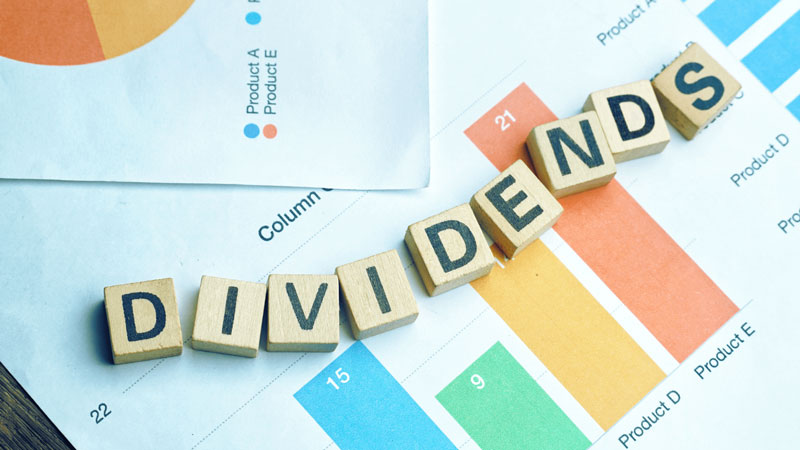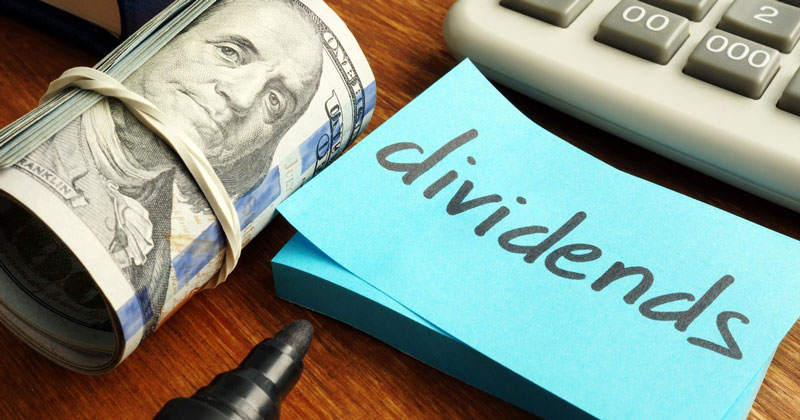What Is the Dividend Yield Percentage?
Advertisement
Triston Martin
Dec 29, 2023
The dividend yield is the percentage of a company's stock price that it pays out in dividends. Which firms pay the most dividends per dollar invested may be determined by comparing the dividend yield to the company's financial condition.
What Is a Dividend, Exactly?
Dividends are paid to shareholders as a percentage of a company's net income. Bonuses are given to shareholders in addition to any increases in the value of their company's stock, and they serve as a kind of compensation for stock ownership.
In some industries, dividends are frequent, and bonuses are more prevalent among established firms that can afford to keep their profits in the company. Companies may choose to distribute dividends regularly, such as every quarter or once a year, or they may choose to do so on an as-needed basis.
Preferred stock has a substantial benefit over ordinary stock in that it consistently pays dividends, while the common stock may also pay dividends. Unlike interest payments on bonds, there is no certainty that dividends will be paid out. Companies may reduce or even abolish payouts if economic conditions worsen.
What Is The Yield On A Dividend?

The dividend yield is the number of dividends a corporation pays out each year for each dollar invested. Rewards are paid out on a quarterly or annual basis, depending on the company's dividend yield.
Companies often pay dividends based on the number of shares they own rather than the value of those shares. Thus, dividend yields might change depending on the current market value of a company's shares. Dividend yields can be found in various stock research tools, but you can also quantify dividend growth on your own.
What Is the Importance of Dividend Yield?
You need to know which stocks provide the best dividend yields to get the most out of your dividend investments. Consider these additional advantages, as well.
Dividend Yields Help Compare Stocks
For income investors, it's essential to compare and choose companies depending on which returns the most dividends per dollar invested. Because of the considerable fluctuations in stock prices, the absolute dividend amount per share is a less helpful indicator.
Companies A and B, both pay a dividend of $2 per share each year. However, Company A's stock is valued at $50 per share, Company B's stock is valued at $100. Company A's payout ratio for an investment investor is 4%, but Company B's dividend yield is just 2% for the same investor.
Indicator of Financial Strength: Rising Dividend Yields
By increasing its dividend and therefore increasing its dividend yield (i.e., paying out more of its earnings to shareholders), an increasing bonus indicates that the firm is doing well.
Older, more established businesses in well-established industries often pay dividends regularly and give higher dividend yields. In contrast, younger, faster-growing firms are more likely to reinvest their profits than pay out dividends.
Dividends Increase Profits
As a result, your investment grows more quickly when dividends are reinvested rather than cashed out every year or quarter. Compounding may have a dramatic impact on your returns over time. According to recent research by Hartford Funds, for the S&P 500, reinvested dividends are responsible for 78 percent of the overall gains since 1970.
Benefits of Dividend Yields

Evidence from the past reveals dividends can increase returns rather than decrease them. According to Hartford Funds analysts, since 1970, 84% of the S&P 500's gains have come from tips. Assumption: Investors will likely reinvest their dividends back into the S&P 500, increasing their potential to earn additional rewards.
A $10,000 investment in stock with a 4% dividend yield at $100 per share would result in $10,000 dividends. This investor has 100 shares of the company, each paying a quarterly dividend of $4 (a total investment of $400).
Dividend Yield Drawbacks
High dividend yields are alluring, but they'll likely come at the company's future growth price. For every dollar that a corporation pays out in dividends to its shareholders, that firm is taking a dollar out of its coffers to help it develop and produce more capital gains. A company's development can boost the value of a shareholder's shares, even if they don't get any dividends during that time.
Investors should avoid basing their decision only on a stock's dividend yield. Data about dividends may be out-of-date or based on inaccurate information. Companies with declining stocks tend to have high products.
Dividend Yield vs. Payout Ratio
Consider the dividend yield to measure the simple rate of return for shareholders when comparing corporate dividend measures. A company's dividend payout ratio tells investors how much of the company's net earnings are distributed to shareholders. However, many think that a company's dividend payment ratio, rather than its dividend yield, is a more robust sign of its capacity to provide dividends in the future reliably. A company's cash flow significantly impacts the dividend payout ratio.







